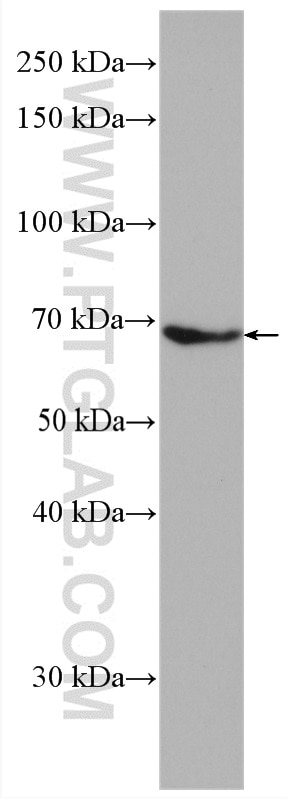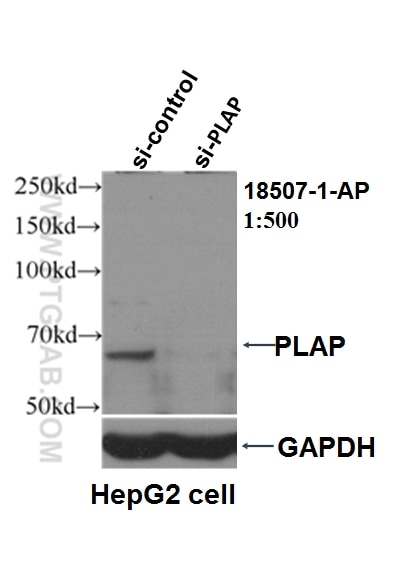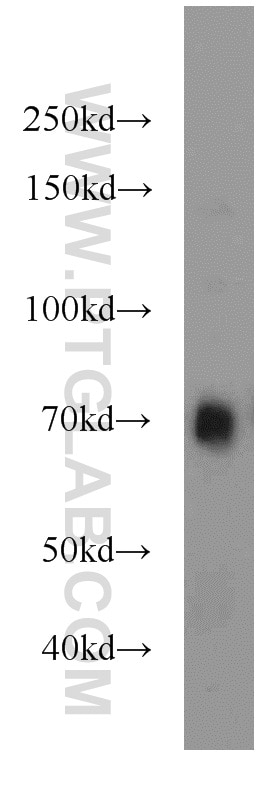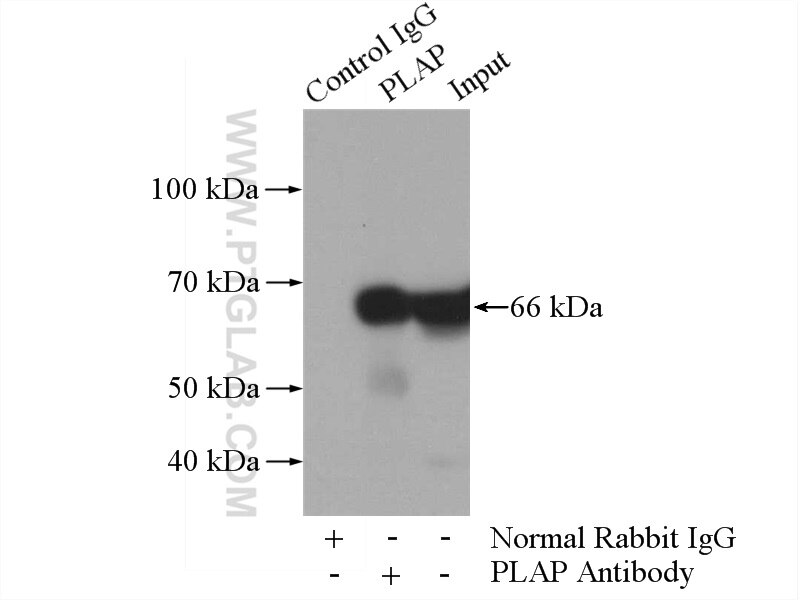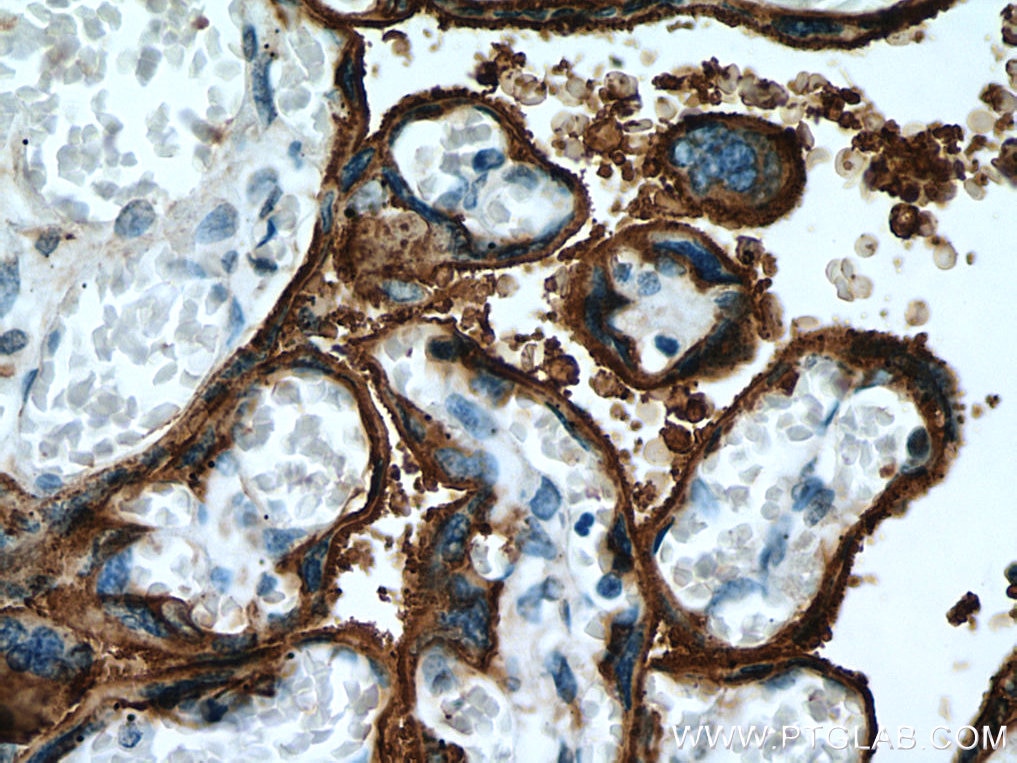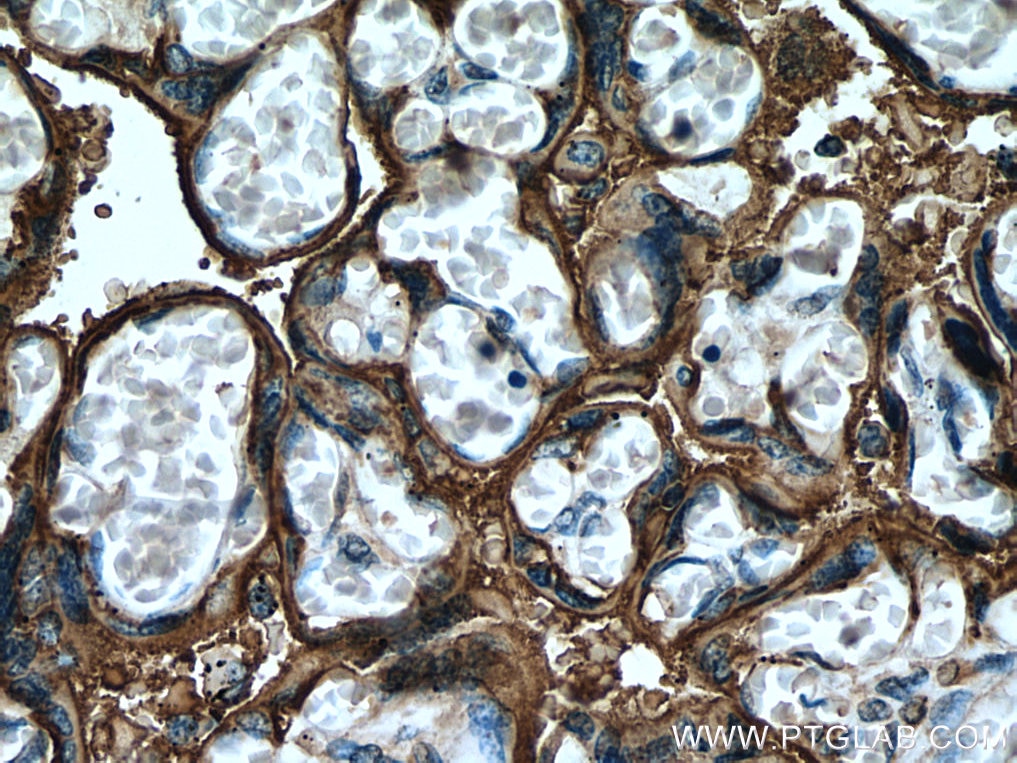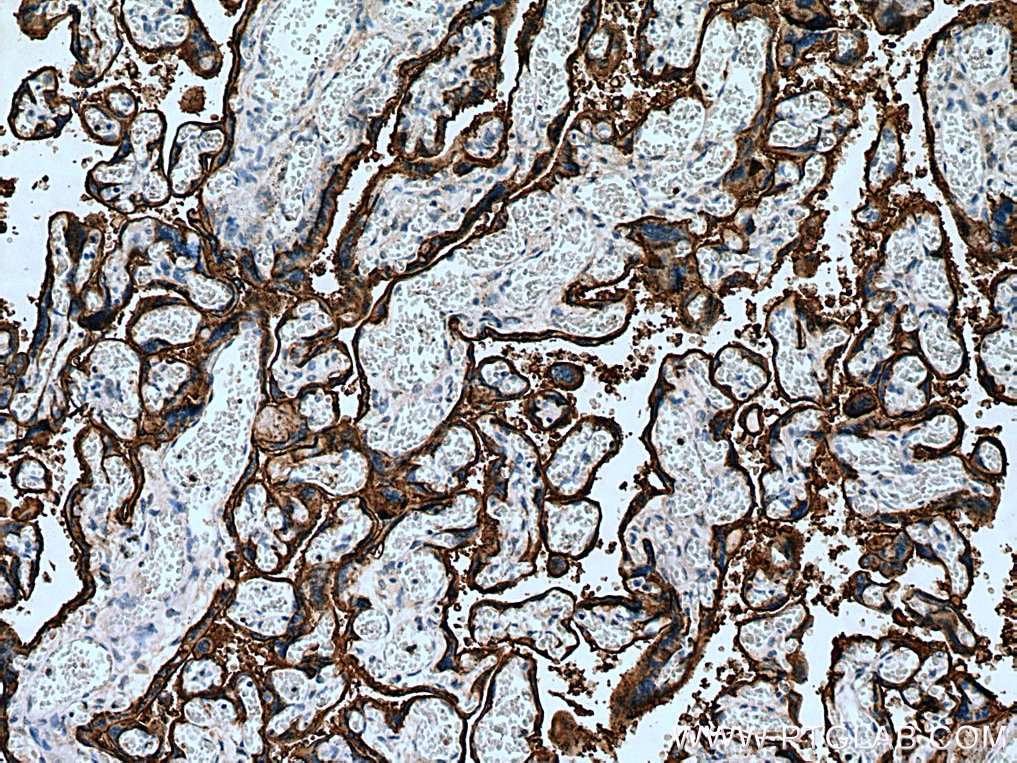- Phare
- Validé par KD/KO
Anticorps Polyclonal de lapin anti-PLAP
PLAP Polyclonal Antibody for WB, IP, IHC, ELISA
Hôte / Isotype
Lapin / IgG
Réactivité testée
Humain, souris et plus (1)
Applications
WB, IHC, IP, ELISA
Conjugaison
Non conjugué
N° de cat : 18507-1-AP
Synonymes
Galerie de données de validation
Applications testées
| Résultats positifs en WB | tissu placentaire humain, cellules HepG2, tissu hépatique de souris |
| Résultats positifs en IP | cellules HepG2 |
| Résultats positifs en IHC | tissu placentaire humain, il est suggéré de démasquer l'antigène avec un tampon de TE buffer pH 9.0; (*) À défaut, 'le démasquage de l'antigène peut être 'effectué avec un tampon citrate pH 6,0. |
Dilution recommandée
| Application | Dilution |
|---|---|
| Western Blot (WB) | WB : 1:1000-1:3000 |
| Immunoprécipitation (IP) | IP : 0.5-4.0 ug for 1.0-3.0 mg of total protein lysate |
| Immunohistochimie (IHC) | IHC : 1:50-1:500 |
| It is recommended that this reagent should be titrated in each testing system to obtain optimal results. | |
| Sample-dependent, check data in validation data gallery | |
Applications publiées
| WB | See 13 publications below |
| IHC | See 4 publications below |
Informations sur le produit
18507-1-AP cible PLAP dans les applications de WB, IHC, IP, ELISA et montre une réactivité avec des échantillons Humain, souris
| Réactivité | Humain, souris |
| Réactivité citée | rat, Humain, souris |
| Hôte / Isotype | Lapin / IgG |
| Clonalité | Polyclonal |
| Type | Anticorps |
| Immunogène | PLAP Protéine recombinante Ag13361 |
| Nom complet | alkaline phosphatase, placental (Regan isozyme) |
| Masse moléculaire calculée | 58 kDa |
| Poids moléculaire observé | 66 kDa |
| Numéro d’acquisition GenBank | BC009647 |
| Symbole du gène | PLAP |
| Identification du gène (NCBI) | 250 |
| Conjugaison | Non conjugué |
| Forme | Liquide |
| Méthode de purification | Purification par affinité contre l'antigène |
| Tampon de stockage | PBS with 0.02% sodium azide and 50% glycerol |
| Conditions de stockage | Stocker à -20°C. Stable pendant un an après l'expédition. L'aliquotage n'est pas nécessaire pour le stockage à -20oC Les 20ul contiennent 0,1% de BSA. |
Informations générales
Placental alkaline phosphatase (PLAP) is a glycosyl phosphatidylinositol (GPI)-anchored sialoglycoprotein , which shows greater resistance to heat inactivation than other alkaline phosphatase. Presented at high levels in placental trophoblasts, PLAP is recognized as an important marker of differentiation in human malignancies.
Protocole
| Product Specific Protocols | |
|---|---|
| WB protocol for PLAP antibody 18507-1-AP | Download protocol |
| IHC protocol for PLAP antibody 18507-1-AP | Download protocol |
| IP protocol for PLAP antibody 18507-1-AP | Download protocol |
| Standard Protocols | |
|---|---|
| Click here to view our Standard Protocols |
Publications
| Species | Application | Title |
|---|---|---|
J Nanobiotechnology Ultrasound-triggered piezoelectric polyetheretherketone with boosted osteogenesis via regulating Akt/GSK3β/β-catenin pathway | ||
Int J Biol Macromol Cranial repair-promoting effect of oxidised sodium alginate/amino gelatine injectable hydrogel loaded with deer antler blood peptides | ||
Aging (Albany NY) Primary cilia regulate gastric cancer-induced bone loss via cilia/Wnt/β-catenin signaling pathway. | ||
ACS Biomater Sci Eng 6-Bromoindirubin-3'-oxime Promotes Osteogenic Differentiation of Periodontal Ligament Stem Cells and Facilitates Bone Regeneration in a Mouse Periodontitis Model. | ||
Mol Cell Endocrinol Long noncoding RNA ZFAS1 suppresses osteogenic differentiation of bone marrow-derived mesenchymal stem cells by upregulating miR-499-EPHA5 axis. | ||
